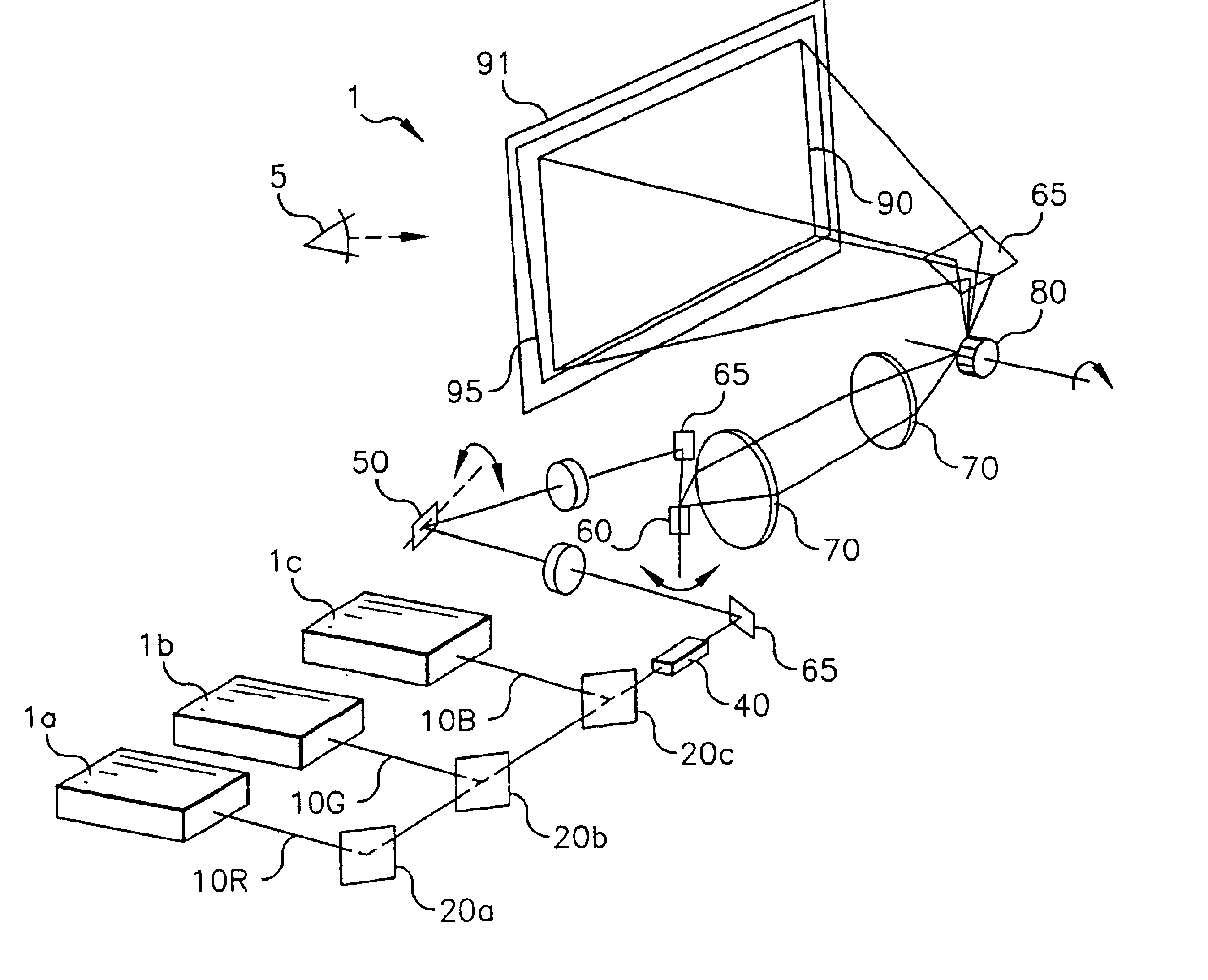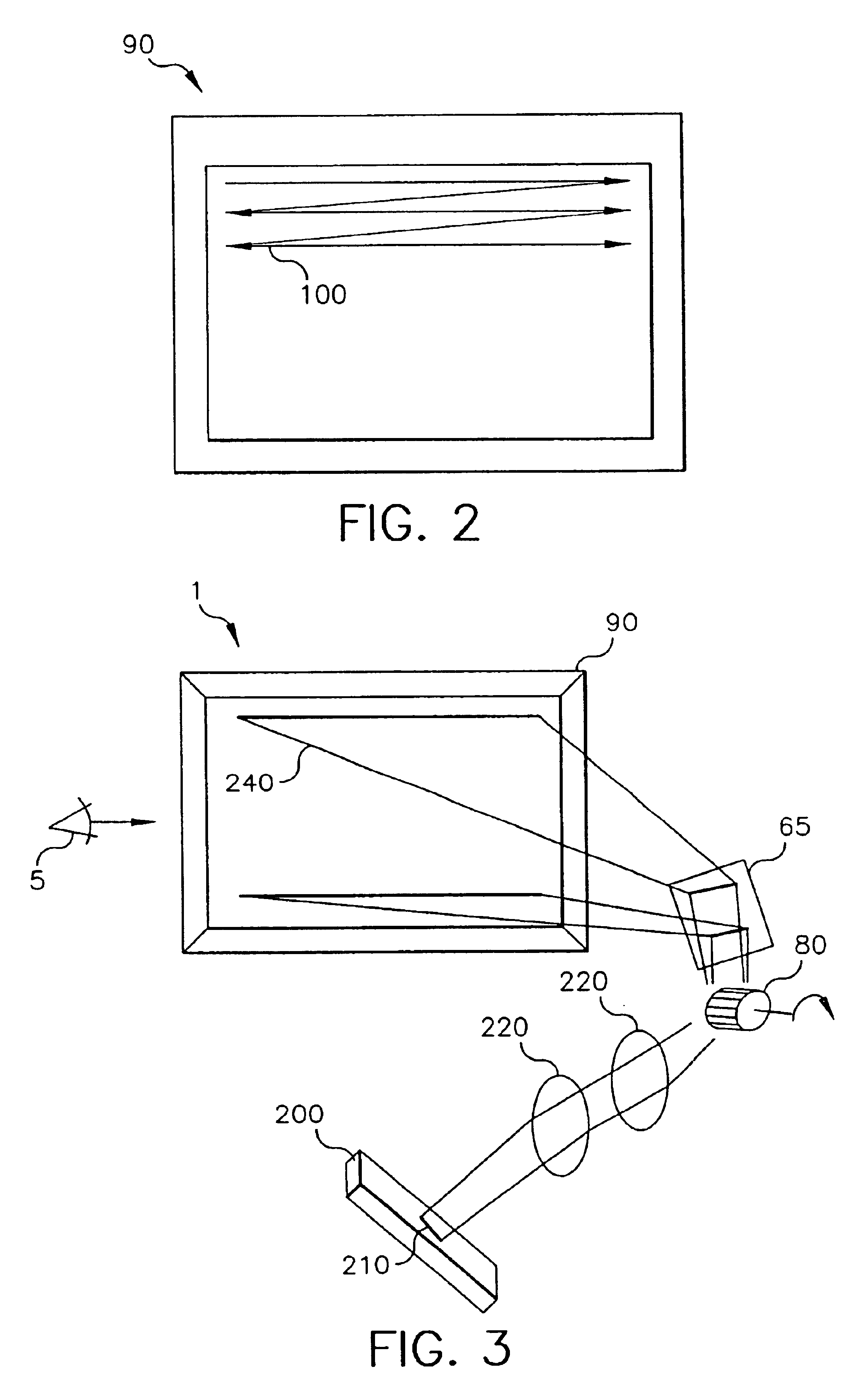Display systems using organic laser light sources
- Summary
- Abstract
- Description
- Claims
- Application Information
AI Technical Summary
Benefits of technology
Problems solved by technology
Method used
Image
Examples
Embodiment Construction
A display system 1 for providing a user viewable visible image is described that uses LED-pumped organic laser microcavity technology. Microcavity lasers with organic active media (gain media) may be used singly or patterned with necessary drive electronics onto a linear array structure. The microcavity lasers are designed with different organic gain media in order to produce devices that emit light with different visible wavelengths. The linear array length and microcavity laser density are such as to produce a high resolution projection display when the laser light is imaged onto a view surface. A single linear array emitting device is imaged to produce either a row or a column of color pixels in the viewed area. The image of the linear array is scanned across the viewed area by means of a single scan device or multiple scan devices to produce a full image in the viewed area.
FIG. 1 illustrates a schematic view of a display system 1 in which three separate organic laser devices 1a,...
PUM
 Login to View More
Login to View More Abstract
Description
Claims
Application Information
 Login to View More
Login to View More - R&D
- Intellectual Property
- Life Sciences
- Materials
- Tech Scout
- Unparalleled Data Quality
- Higher Quality Content
- 60% Fewer Hallucinations
Browse by: Latest US Patents, China's latest patents, Technical Efficacy Thesaurus, Application Domain, Technology Topic, Popular Technical Reports.
© 2025 PatSnap. All rights reserved.Legal|Privacy policy|Modern Slavery Act Transparency Statement|Sitemap|About US| Contact US: help@patsnap.com



